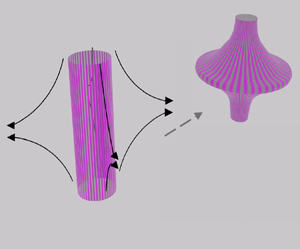Article contents
New exact Betchov-like relation for the helicity flux in homogeneous turbulence
Published online by Cambridge University Press: 11 May 2023
Abstract

In homogeneous and isotropic turbulence, the relative contributions of different physical mechanisms to the energy cascade can be quantified by an exact decomposition of the energy flux (Johnson, Phys. Rev. Lett., vol. 124, 2020, 104501; J. Fluid Mech., vol. 922, 2021, A3). We extend the formalism to the transfer of kinetic helicity across scales, important in the presence of large-scale mirror‐breaking mechanisms, to identify physical processes resulting in helicity transfer and quantify their contributions to the mean flux in the inertial range. All subfluxes transfer helicity from large to small scales. Approximately 50 % of the mean flux is due to the scale-local vortex flattening and vortex twisting. We derive a new exact relation between these effects, similar to the Betchov relation for the energy flux, revealing that the mean contribution of the former is three times larger than that of the latter. Multi-scale effects account for the remaining 50 % of the mean flux, with approximate equipartition between multi-scale vortex flattening, twisting and entangling.
JFM classification
Information
- Type
- JFM Rapids
- Information
- Copyright
- © The Author(s), 2023. Published by Cambridge University Press
References
- 4
- Cited by


